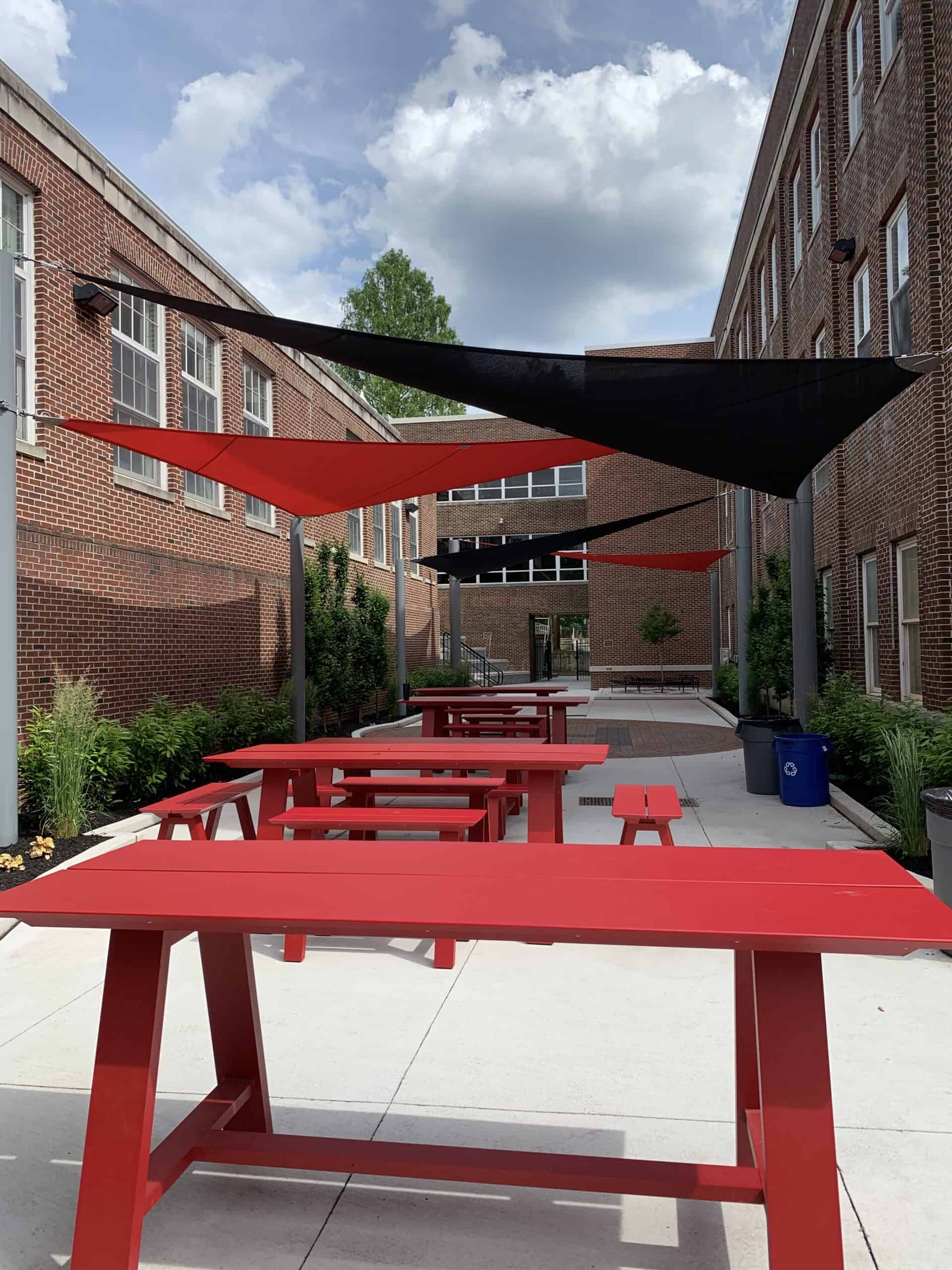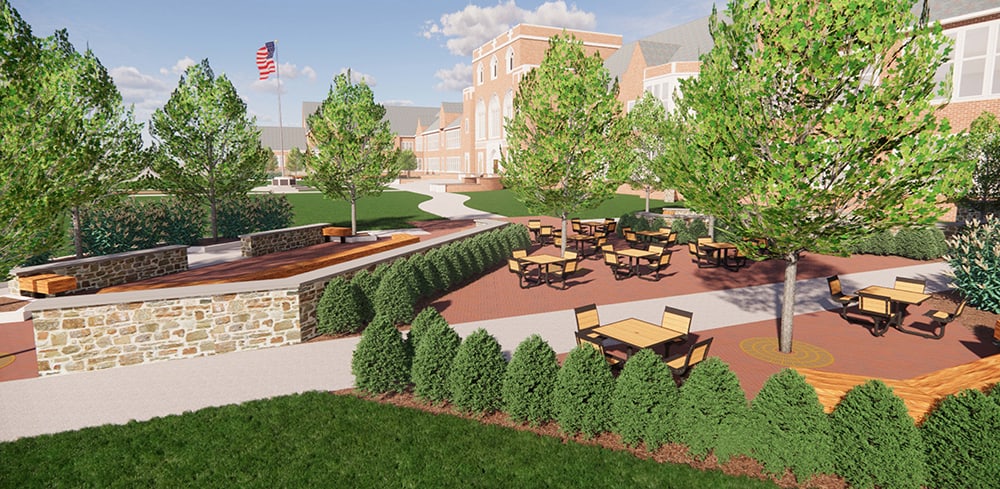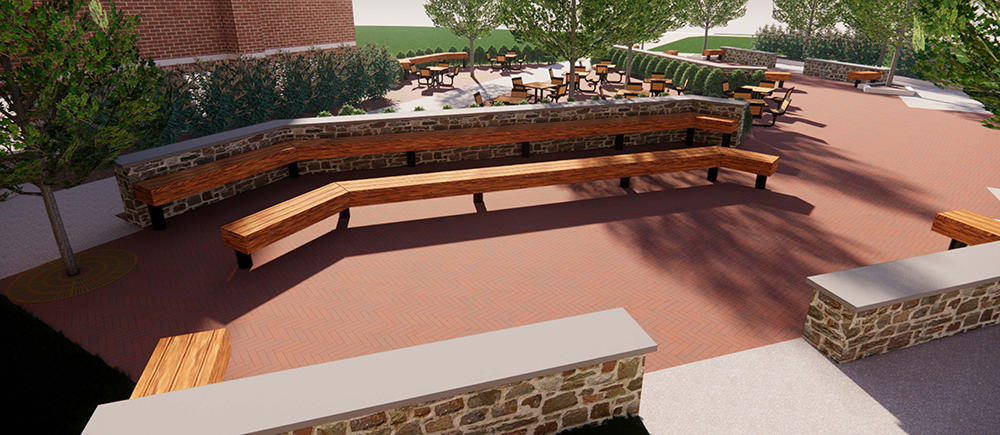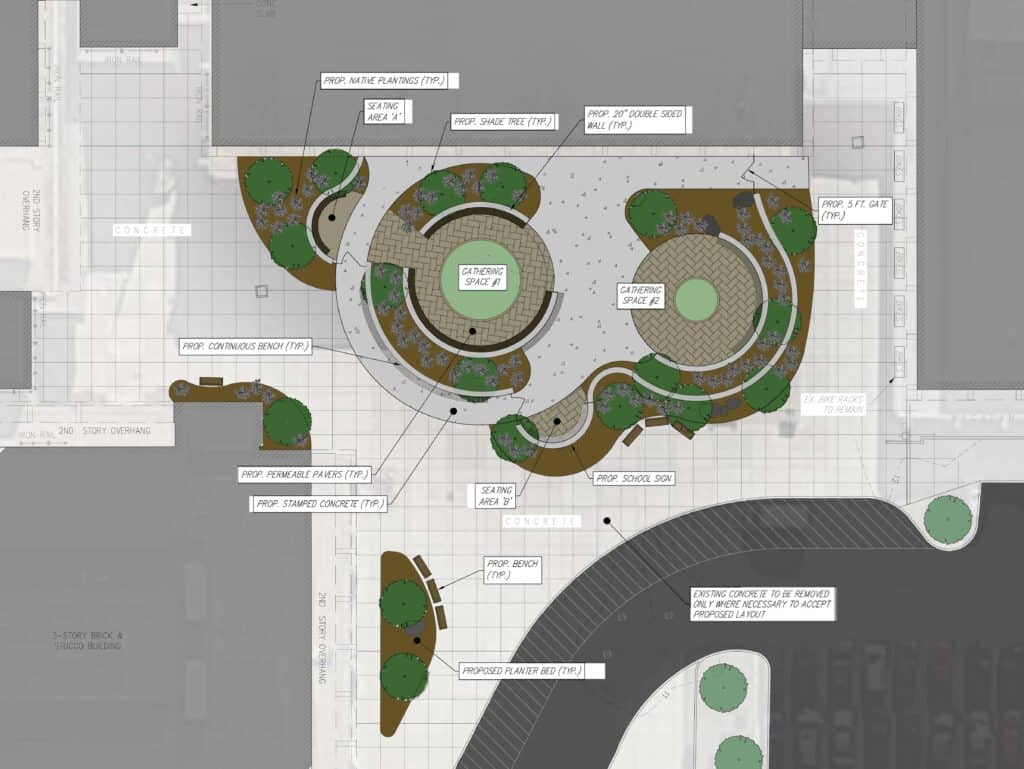Best Practices for Outdoor Learning Environments
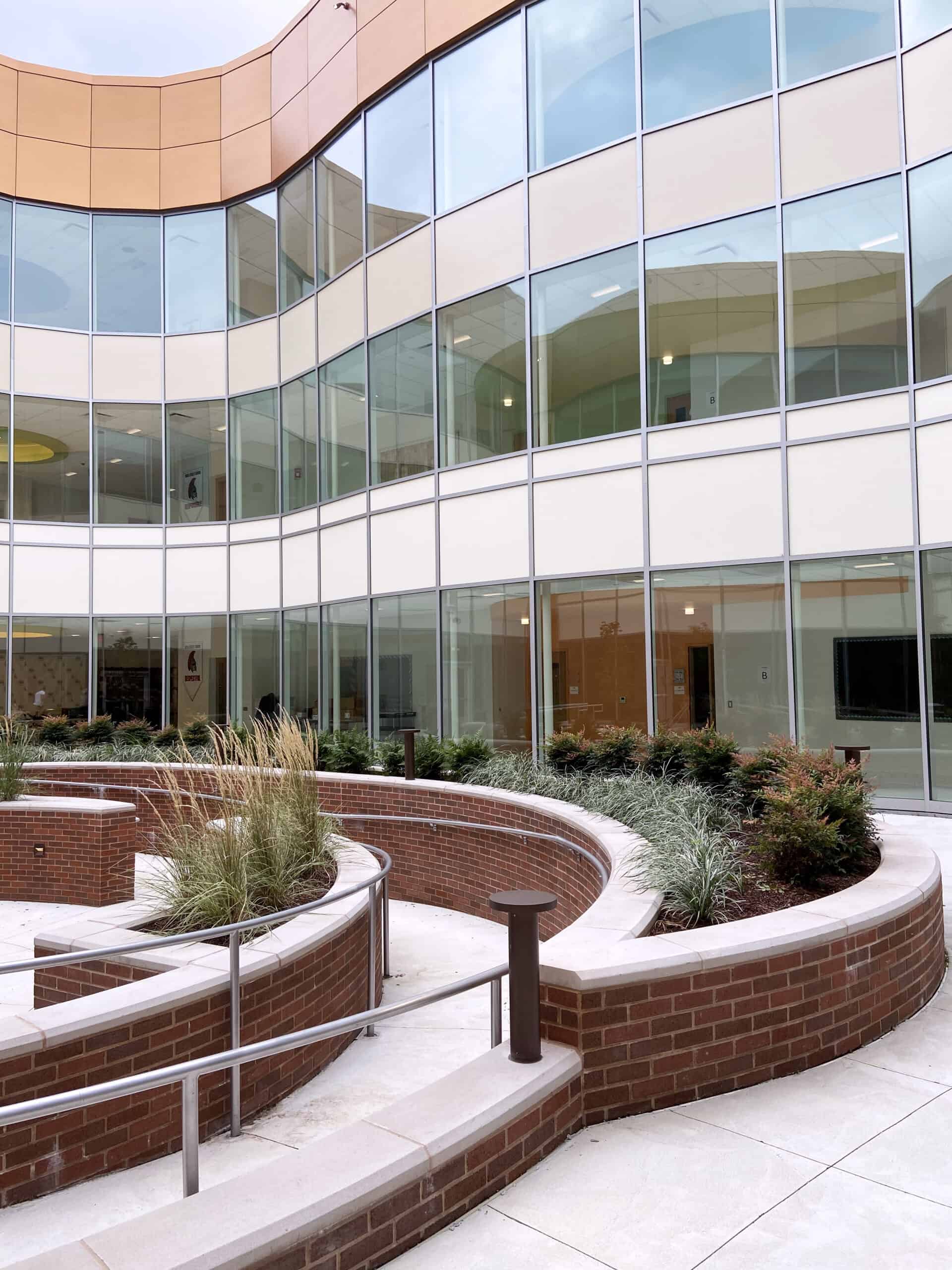
In the heart of the densely populated town of Woodbridge, NJ, the courtyard at Ross Street Elementary School provides students with a connection to nature and the perfect location for outdoor learning.
Shade Sails block the setting sun at the new courtyard at Memorial High School in Haddonfield, NJ. The multi-functional student instruction area has built-in tiered seating and landscaping around the perimeter.
